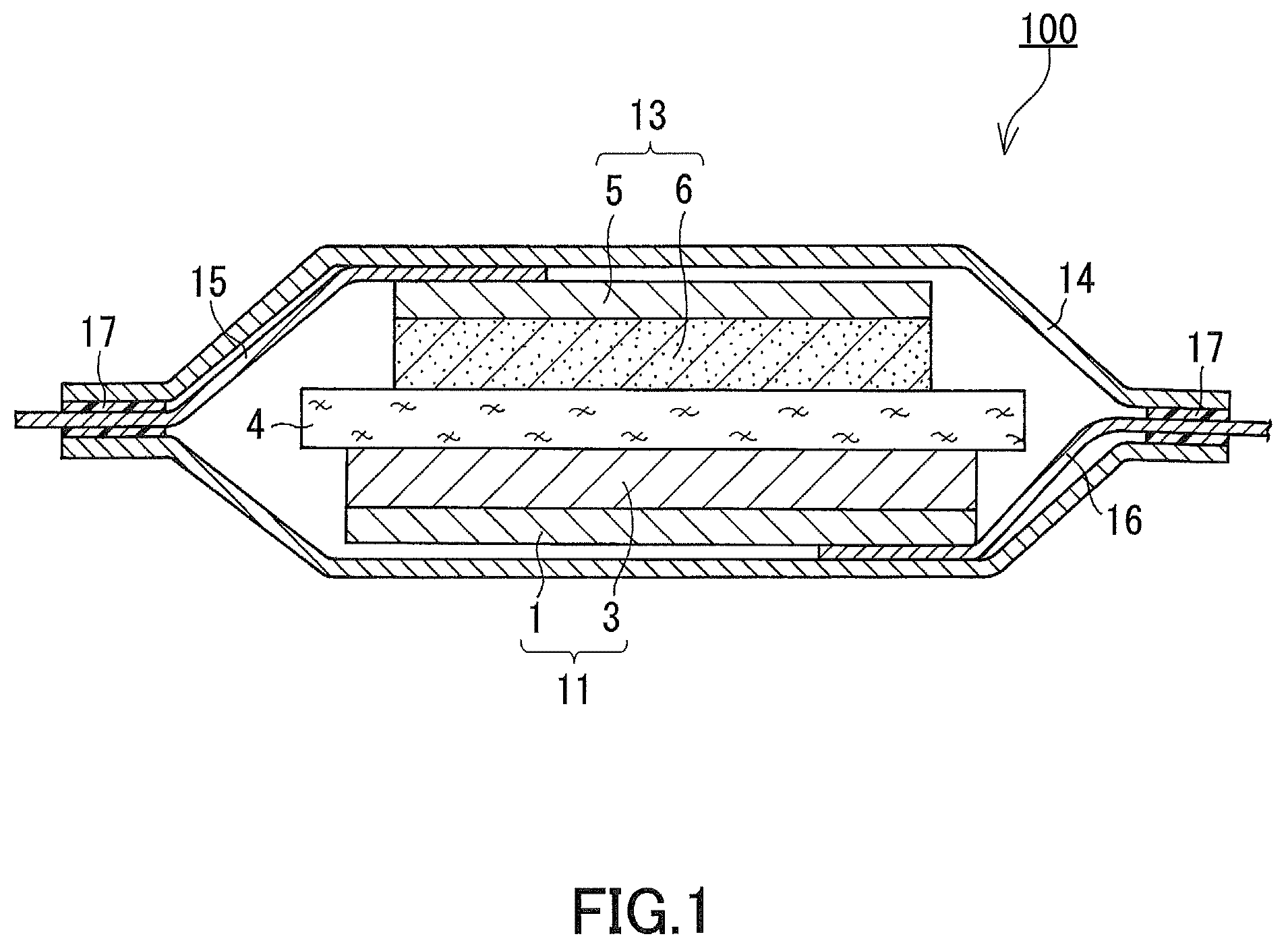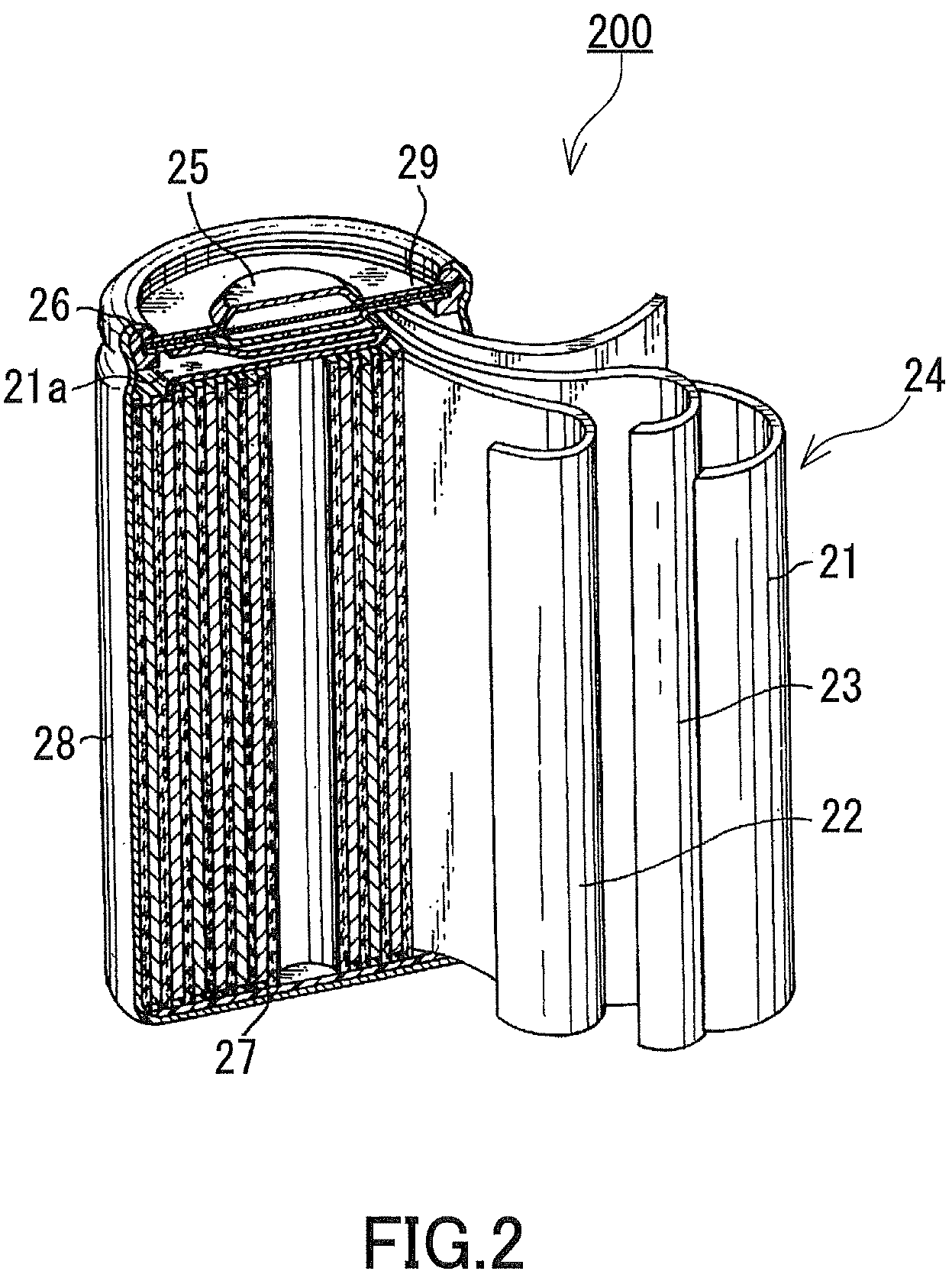Lithium secondary battery manufacturing method comprising forming lithium metal layer and lithium secondary battery
a secondary battery and manufacturing method technology, applied in the direction of cell components, final product manufacturing, sustainable manufacturing/processing, etc., can solve the problems of reducing the capacity of the battery, not always reducing the deformation of the negative electrode to a satisfying level, and the active material of the negative electrode fails to contribute to the charge and discharge, etc., to achieve the effect of reducing the deformation of the negative electrode, avoiding a decrease in the charge and discharge capacity, and reducing the deformation
- Summary
- Abstract
- Description
- Claims
- Application Information
AI Technical Summary
Benefits of technology
Problems solved by technology
Method used
Image
Examples
examples
[0082]
[0083](a) Fabrication of Negative Electrode Current Collector
[0084]As the material for the negative electrode current collector, a copper alloy foil with a thickness of 26 μm was prepared. The copper alloy foil was subject to press processing on its front and back surfaces so that projections, each having a rhomboidal shape in plane view and diagonal lines of 10×20 μm, are formed thereon at an interval of 30 μm. The height of the projections was set to 6 μm. Subsequently, a copper roughening plating layer with a thickness of 2 μm was formed on each of the surfaces of the copper alloy foil by an electrolytic copper plating method. Thus, a negative electrode current collector was obtained. The copper roughening plating layer had Ra, an arithmetic mean roughness according to JIS B 0601 (1994), of about 0.5 μm.
[0085](b) Formation of the Negative Electrode Active Material Layer
[0086]Next, a negative electrode active material layer containing silicon and a silicon oxide was formed o...
PUM
| Property | Measurement | Unit |
|---|---|---|
| temperature | aaaaa | aaaaa |
| temperature | aaaaa | aaaaa |
| elongation percentage | aaaaa | aaaaa |
Abstract
Description
Claims
Application Information
 Login to View More
Login to View More - R&D
- Intellectual Property
- Life Sciences
- Materials
- Tech Scout
- Unparalleled Data Quality
- Higher Quality Content
- 60% Fewer Hallucinations
Browse by: Latest US Patents, China's latest patents, Technical Efficacy Thesaurus, Application Domain, Technology Topic, Popular Technical Reports.
© 2025 PatSnap. All rights reserved.Legal|Privacy policy|Modern Slavery Act Transparency Statement|Sitemap|About US| Contact US: help@patsnap.com



